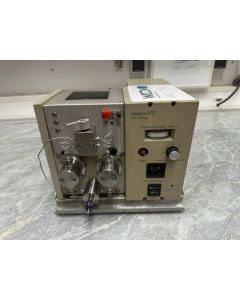HPLC pump
- Packaging Unit PCESpecial Price $1,084.08 Regular Price $1,357.81 Bulk price $1,051.56Excl. VAT, excl. Shipping
- Packaging Unit PCE$1,792.31 Bulk price $1,738.54Excl. VAT, excl. Shipping
- Packaging Unit PCE$2,009.56Excl. VAT, excl. Shipping
- Packaging Unit PCE$36.07 Bulk price $30.09Excl. VAT, excl. Shipping
- Packaging Unit PCE$153.16 Bulk price $150.86Excl. VAT, excl. Shipping
- Packaging Unit PCE$45.62 Bulk price $38.02Excl. VAT, excl. Shipping
- Packaging Unit PCE$49.97 Bulk price $49.22Excl. VAT, excl. Shipping
- Packaging Unit PCE$146.64 Bulk price $144.44Excl. VAT, excl. Shipping
- Packaging Unit PCE$1,575.06 Bulk price $1,551.44Excl. VAT, excl. Shipping
- Packaging Unit PCESpecial Price $1,627.20 Regular Price $2,118.19 Bulk price $1,467.01Excl. VAT, excl. Shipping
- Packaging Unit PCESpecial Price $855.97 Regular Price $1,031.94 Bulk price $759.86Excl. VAT, excl. Shipping
- Packaging Unit PCESpecial Price $704.98 Regular Price $923.31 Bulk price $542.31Excl. VAT, excl. Shipping
Pumps for HPLC applications
- Mode of operation
- Requirements
- Wear and symptoms
- Used HPLC Pumps
- Pump types
- Spare parts for pump systems
- Buy HPLC pump at WICOM
Mode of operation
The HPLC pump ensures the transport of an eluent into the HPLC system by suction in the mobile phase. The eluent is transported from a storage vessel through the inlet valve of the HPLC pump into the piston chamber and enters the HPLC column by means of compression through the outlet valve. Shortly before the eluent leaves the pump, the pressure is measured. This provides an indication of whether there are any blockages, flow fluctuations or leaks.Requirements
Depending on the use, statements can be made about how an HPLC pump should function. In order to transport the eluents into the separation columns, the HPLC pump must have sufficient and constant flow rate and pressure stability. If the pulsation during HPLC is too high, it is almost impossible to achieve stable results. In addition, these pressure surges can damage the stationary phase. It is consistency that is important here to make the procedure reproducible without changing any results. Rapid gradient formation is caused by a low internal volume of the HPLC pump.
Wear of an HPLC pump
It is not uncommon for HPLC pumps to wear out over the course of their use, as they are subjected to very high loads. Depending on the column filling, they can withstand pressures of up to 400 bar. There are several indicators that show if an HPLC pump needs to be replaced soon. Typical symptoms are as follows- Retention times increase
- Retention times are very difficult to reproduce
- Irregularity in the baselines due to
- Fluctuations
- Spikes and pulses
- Drift
- Waves
- Reduction of pressure
- Pressure pulsations
- Inconsistent flow velocities
- Deterioration of suction during the mobile phase
- Air bubbles in the lines
An HPLC pump may also show deterioration in its function due to wear and tear of individual components within the pump. For example, if the seals are severely worn or even broken, significant damage could occur as the HPLC pump continues to be used. For this reason, we recommend a regular check of the individual components of each HPLC system. Observe the operating instructions in order to be able to assign possible restrictions.
Used HPLC pumps
Many laboratories rely on used equipment when purchasing new HPLC modules. In our assortment you will find a wide range of fully functional HPLC pumps from different manufacturers like Agilent, Waters, Shimadzu, Spectra and many more! These devices arrived at the WICOM workshop due to laboratory liquidations, insolvencies or conversions. Here, these components are thoroughly examined, serviced and, if necessary, repaired by highly trained technicians. At WICOM, you not only benefit from top prices, but excellent customer service and fast delivery are also part of our standardsPump types
In the field of HPLC, a distinction is made between discontinuous and continuous pumps. Because discontinuous pumps are not suitable for the use of gradients, they are hardly used for HPLC applications. Continuous pumps are divided into the following models- Single-head piston pump: An asymmetrically shaped eccentric loop greatly shortens the filling phase
- Short-stroke double-piston pump: One piston is responsible for priming, while the other piston is responsible for pumping the eluent into the HPLC system
- One-and-a-half-head pumps: Here, too, two pistons work together. The difference, however, is that they operate one after the other in a staggered manner
Spare parts for pump systems
A typical pump system for HPLC consists of various components. Here, a distinction must be made between a piston pump and a diaphragm pump. While the piston pump works with a diaphragm for the suction, this task is taken over by an inlet and outlet valve in the diaphragm pump. If only a single component of your pump needs to be replaced, you will also find high-quality spare parts at WICOM. From HPLC pistons to valves and seals - you will find everything you need to repair your HPLC pump system in our online store.
Buy HPLC pump at WICOM
Benefit from the large assortment of our online store for laboratory analytics. For more than 36 years we have been supplying numerous laboratories worldwide with instruments for HPLC and GC. Among them are HPLC accessories like columns for different phases, HPLC vials and HPLC spare parts (new and used). With us you come first. Are you looking for a specific model and cannot find it at WICOM? Contact us! We will do our best to find the right model for you.
You can get an overview of our prices after free registration in our online store. We look forward to hearing from you.




